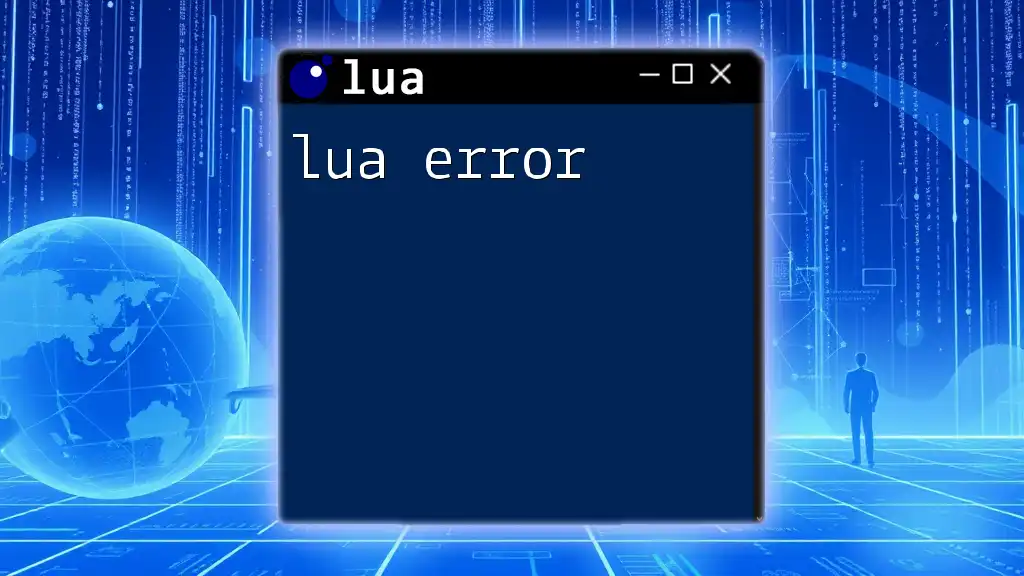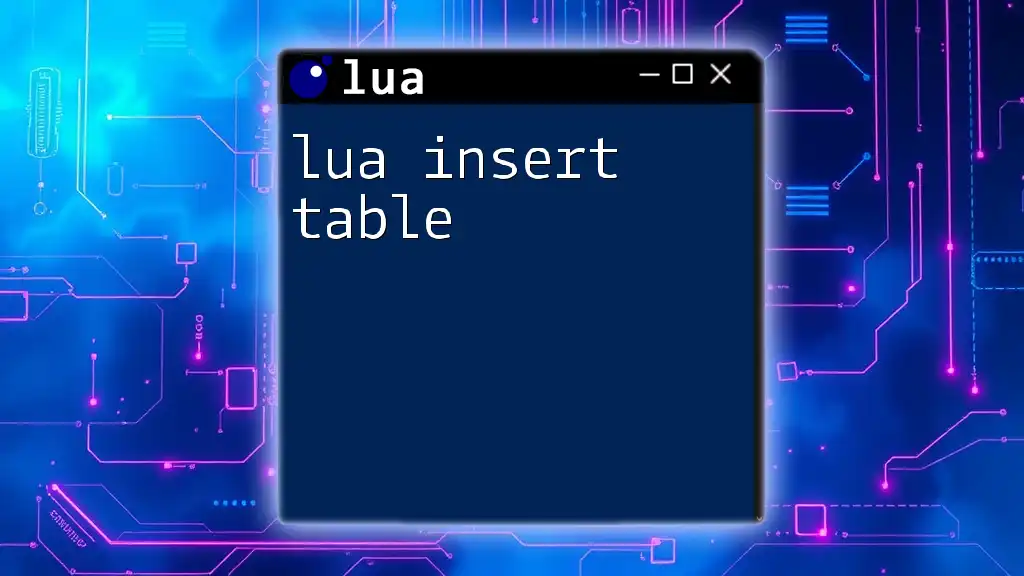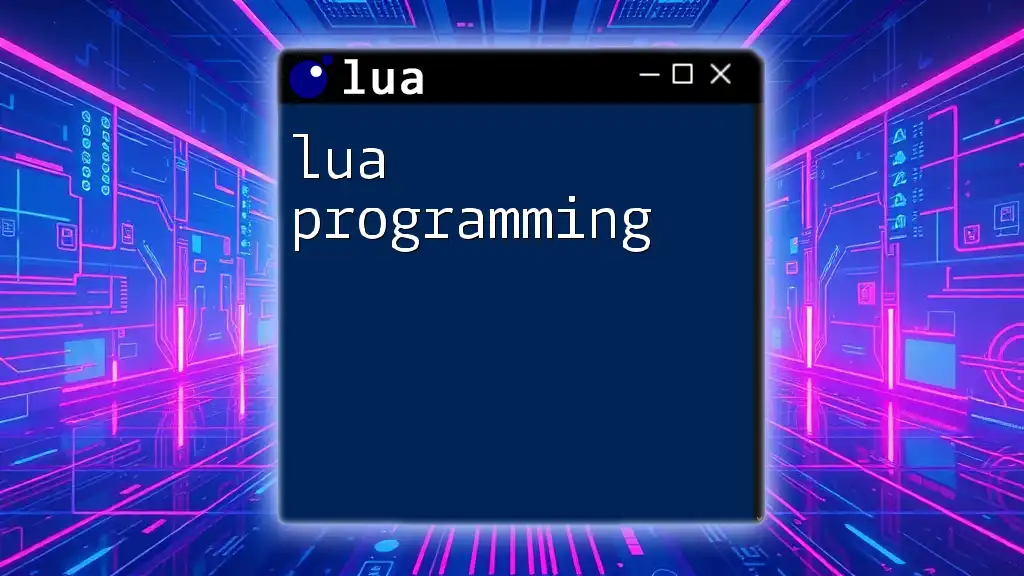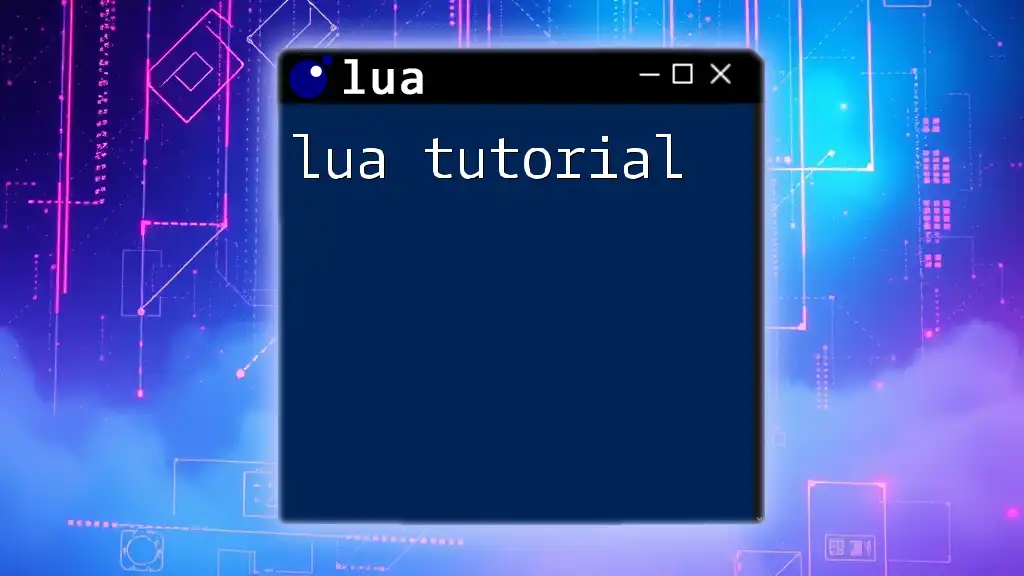A Lua interpreter is a program that executes Lua code, allowing users to write and test Lua scripts interactively or from external files.
Here's a simple example of Lua syntax that prints "Hello, World!" to the console:
print("Hello, World!")
Understanding the Lua Interpreter
What is the Lua Interpreter?
The Lua interpreter is a vital component in the execution of Lua scripts, serving as the engine that processes and executes the code you write. It translates the human-readable Lua commands into a format that the machine can understand, allowing for dynamic and interactive programming.
How the Lua Interpreter Works
Basic architecture of the Lua interpreter
The Lua interpreter relies on the Lua virtual machine (VM), which operates at the core of the system. Essentially, the interpreter takes your source code and processes it step by step, converting it into bytecode that the VM can execute.
In this architecture, the interpreter is responsible for:
- Parsing the source code: This involves analyzing the code structure for correct syntax and generating an abstract syntax tree (AST) that captures the logical flow of the code.
- Executing the bytecode: Once the bytecode is generated, the interpreter goes through it line by line to execute commands and manage the program's state.
- Handling runtime errors: The interpreter also manages errors that may occur during execution, providing helpful feedback when something goes wrong.
Setting Up the Lua Interpreter
Installing Lua
To start using the Lua interpreter, the first step is to install Lua on your system. Lua is available for various platforms, including Windows, macOS, and Linux.
- Windows: Use LuaBinaries for the latest version, and follow the setup instructions provided.
- macOS: Use Homebrew by running the command `brew install lua`.
- Linux: Most distributions have Lua within their package managers; for example, you can use `sudo apt-get install lua5.3` for Ubuntu.
Configuring your Environment
After installation, configuring your development environment is crucial for a smooth experience:
- Setting up your code editor: Recommended IDEs for Lua include Visual Studio Code, IntelliJ IDEA (with Lua plugin), and ZeroBrane Studio. Configure the IDE to recognize Lua files and set syntax highlighting features.
- Testing your installation: To confirm your Lua interpreter is working correctly, run a simple command in your terminal:
lua -e 'print("Lua is working!")'
Running Lua Scripts with the Interpreter
Basic Command-Line Usage
Using the Lua interpreter from the command line is straightforward. You can launch the interpreter by typing `lua` in your command prompt or terminal.
- Running Lua files: To execute a Lua file, navigate to the file's directory in your terminal and run:
lua your_script.lua
Example Code Snippet: Hello World
To illustrate how easy it is to get started with Lua, consider this traditional "Hello, World!" program:
print("Hello, World!")
This simple command outputs the text "Hello, World!" to the console.
Interactive Mode vs. Script Mode
Interactive Mode allows you to enter commands directly into the interpreter, which is especially useful for quick testing and experimentation.
- What is Interactive Mode?: In this mode, you can execute commands line-by-line, making it great for debugging and learning Lua interactively.
Script Mode, on the other hand, allows you to run entire scripts saved in files. This mode is beneficial when you have more complex applications to execute.
Example Code Snippet in Interactive Mode
To demonstrate using the interactive mode, input the following commands in the Lua shell:
> a = 10
> print(a * 2)
This code assigns the value 10 to variable `a` and prints the result of `a * 2`, which would output `20`.
Features of the Lua Interpreter
Built-in Functions and Libraries
One of the significant advantages of using the Lua interpreter is the extensive set of built-in functions and libraries. Lua offers modules like math, string, and table, which provide essential functionalities.
For instance, you can use the `math` library as follows:
print(math.sqrt(16)) -- Outputs: 4
Error Handling in Lua
Understanding error handling is crucial when using the Lua interpreter. Lua categorizes errors into three types: syntax errors, runtime errors, and logical errors.
Using the built-in function `pcall`, you can execute code safely without crashing the interpreter:
local success, err = pcall(function()
-- code that may cause an error
end)
if not success then
print("Error: " .. err)
end
This example allows you to gracefully handle potential errors by capturing them and providing feedback.
Differences Between Lua Interpreter and Compiler
What is a Lua Compiler?
While the interpreter processes Lua code line-by-line, a Lua compiler translates the entire script into bytecode before execution. This bytecode is machine-readable, optimizing performance because it eliminates the need for repeated parsing.
When to Use a Compiler Instead of the Interpreter
Using a Lua compiler can significantly enhance run-time efficiency, especially for larger and more complex applications. It compiles scripts into bytecode, making subsequent executions faster as no parsing is required.
Best Practices for Using the Lua Interpreter
Writing Efficient Lua Code
To maximize performance when using the Lua interpreter, consider these tips:
- Use local variables instead of global ones to reduce namespace pollution and improve access speed.
- Minimize the creation of unnecessary tables or objects within loops to reduce garbage collection workload.
Debugging Lua Code with the Interpreter
Debugging is an integral part of coding. Utilize the Lua interpreter's capabilities to test small code snippets frequently.
- Implement print statements to track variable states or execution flow.
- Leverage error messages returned by the interpreter to identify issues quickly.
Conclusion
The Lua interpreter is a robust tool that serves as the backbone of Lua programming. By understanding how it operates, setting it up correctly, and employing best coding practices, you can unlock the full potential of Lua in your projects. With the above knowledge, you can confidently navigate your journey in learning and mastering Lua.

















